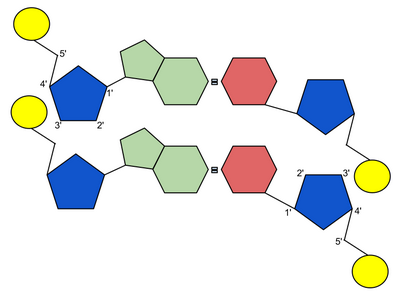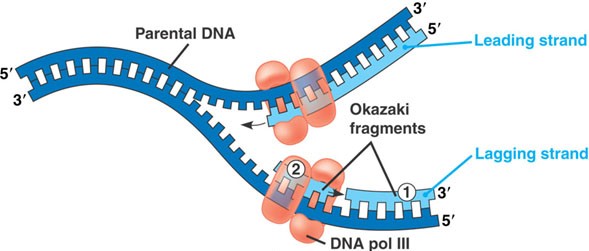DNA and Molecular Genetics Review Guide
Chapter 14 -17 OpenStax
1. Describe the contributions of each of the following with regards to the discovery of DNA:
Rosalind Franklin
Watson & Crick
Chargaff, Wilson
Griffith (Avery)
Hershey-Chase
2. Know the structure of DNA. Be able to label DNA or draw a model on the test.
Be able to identify the 3' and the 5' ends

3. Describe the process of DNA replication. Know the players involved:
DNA helicase, DNA polymerase, replication fork, leading strand, lagging strand, Okazaki fragments, DNA ligase, complementary strand, base-pairing

4. Describe the process of transcription, including where it occurs and what components are necessary for it to occur. (RNA polymerase, template strand, uracil, Poly-A tail, introns, exons)
5. Be able to compare a molecule of DNA to a molecule of RNA and describe each different type of RNA and the role they play.
6. Describe the process of translation, including where it occurs and what components are involved in it. Pay particular attention to the role of tRNA and the anticodons. Also be able to use a codon chart to determine the sequence of amino acids found in a gene.
7. Compare DNA to RNA and understand the roles of DNA polymerase and RNA polymerase.
8. Understand the relationship between genes, proteins, amino acids, and chromosomes, also known as “The Central Dogma”
9. Gene Regulation Know the three regions associated with a gene: Promoter, coding region, terminator. Discuss the roles of each within the lac operon and the tryp operon.
Compare inducible operons to repressible operons.

10. Discuss how SNPs and coding regions of DNA related to an organism’s phenotype (Sickle Cell Anemia, Stickleback fish and the MC1r gene in rock pocket mice)
11. Compare different types of DNA mutations and their role in genes and phenotypes. (insertion, deletion, frameshift, point, silent)
12. Review topics in Biotechnology
- Cloning
- Recombinant DNA (Genetically Modified Organisms)
- DNA fingerprinting (Gel electrophoresis)
- Sanger Sequencing

